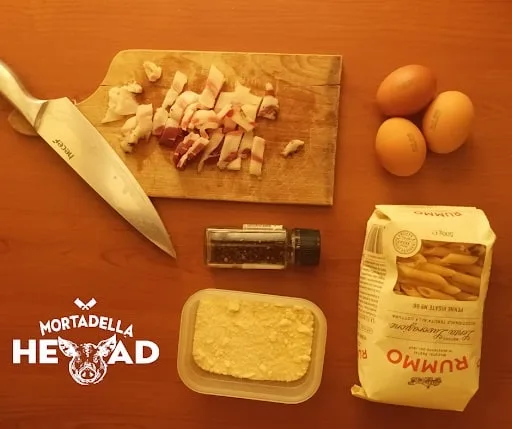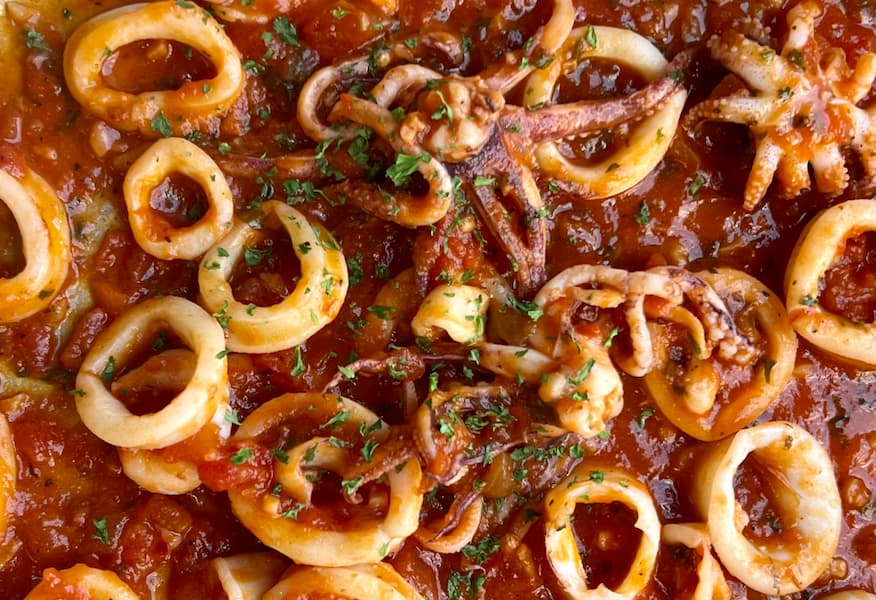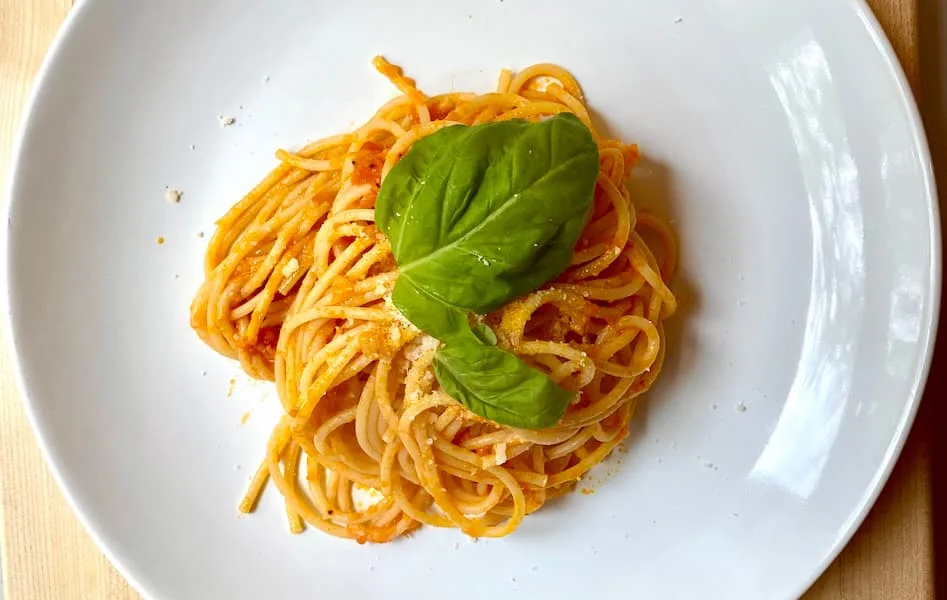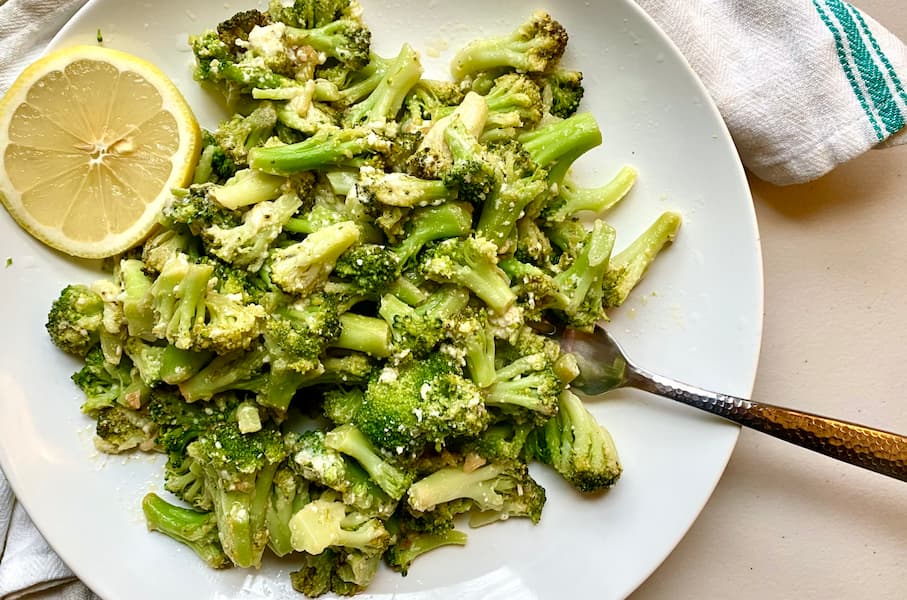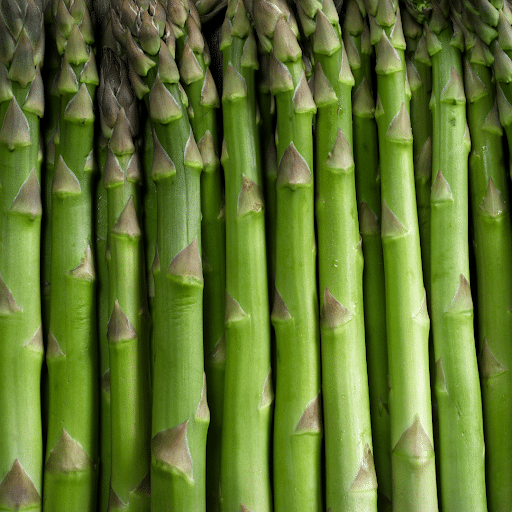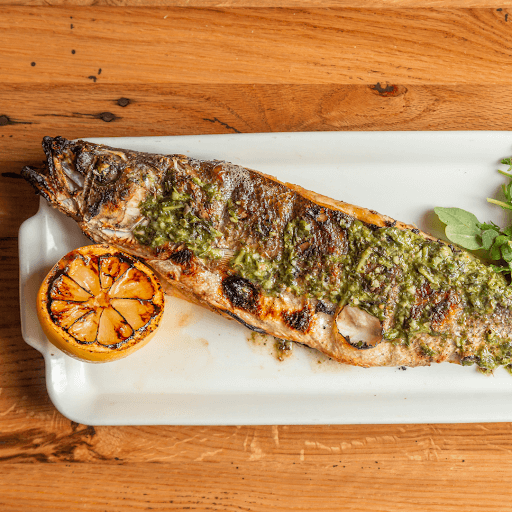Who doesn’t love a hearty plate of penne carbonara? I sure do. There’s a reason why this dish has quickly become one of the most world-famous Italian pastas. Its creamy egg sauce and the sweet, smoky guanciale combined with savory pecorino cheese create an unforgettable combination of flavors.
It’s a perfect meal, no matter what you’re doing or where you are. Be it a night out at a fancy restaurant, or an evening spent on the couch with comfort food, carbonara will always be an excellent choice. I don’t know about you, but there’s no way I could see it on a menu and go: ‘Nah, y’know what, I’m just gonna have a healthy salad!’
Which is why I make it often at home.
Being a relatively easy recipe, one would think that it takes nothing to make a decent carbonara. And yet, it’s also very easy to mess it up. All of the ingredients require a little extra care in order to blend well together.
I also think that there’s average carbonara, and then there’s good carbonara. The one that fills your mouth with its creamy sauce and delicious flavors and leaves you craving more after every bite. Although still easy, this type of carbonara takes a little more attention to make.
I’ve always found it a little frustrating that my carbonara didn’t taste as well as in my favorite place. So, I spent countless hours learning how to properly handle all the ingredients and gathering as much advice as I could from the experts. And now, although there’s still room for improvement, I consider myself quite satisfied with my carbonara recipe – to the point that I feel confident sharing all I’ve learned so far.
I won’t be focusing on the trite debates about whether you should use guanciale or bacon, whole eggs or egg yolks, pecorino or parmigiano, should carbonara have cream and garlic, and all the rest. My opinions on that are pretty set: guanciale, egg yolks, pecorino, no heavy cream, and no garlic.
Instead, my focus will be on using each ingredient correctly to bring out its best flavors. How to cook the guanciale so that it’s crispy on the outside, but tender and juicy on the inside. How many egg yolks to use and how to pasteurize them without making a frittata. How to organize everything so that you don’t have to rush in the middle of cooking. You get the idea.
So, let’s roll up our sleeves and master the art of carbonara. Let’s get started!
What You’ll Need
Penne pasta: although carbonara is commonly made with bucatini or spaghetti, some prefer shorter pasta types like rigatoni or penne. In this recipe, I chose the latter. Nevertheless, the techniques you’ll read about apply to every pasta carbonara recipe. So, feel free to use your favorite pasta noodles or shapes.
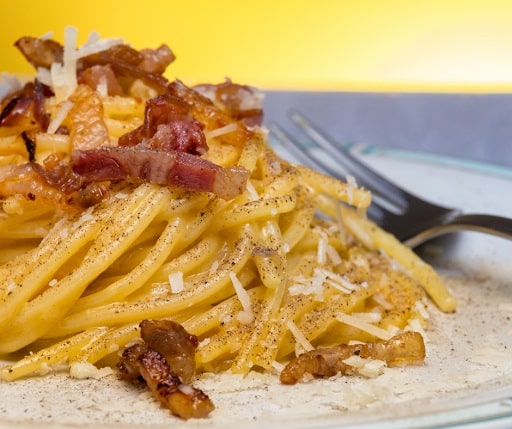
Guanciale: I’ve been using this ingredient a lot lately 😀 Guanciale is a type of cured meat made from pork jowl. It’s the most debated ingredient in carbonara, as many people like to use bacon or pancetta instead. However, this time I’m going to side with the purists. Compared to the other two, guanciale has a different texture and a more intense, spicier taste, and it can really bring your carbonara to the next level.
Egg yolks: many people like to use a mix of egg yolks plus a whole egg. Anyway, I think using only yolks is better. The reason is the science behind the recipe. You probably know the secret to a good carbonara sauce is heating the eggs until creamy but not fully cooking them. But have you ever wondered how this happens?
During this process, the proteins in the eggs coagulate, thickening the sauce. However, egg whites’ proteins coagulate at a different temperature from yolks. So, if you use both, your carbonara sauce will turn runnier.
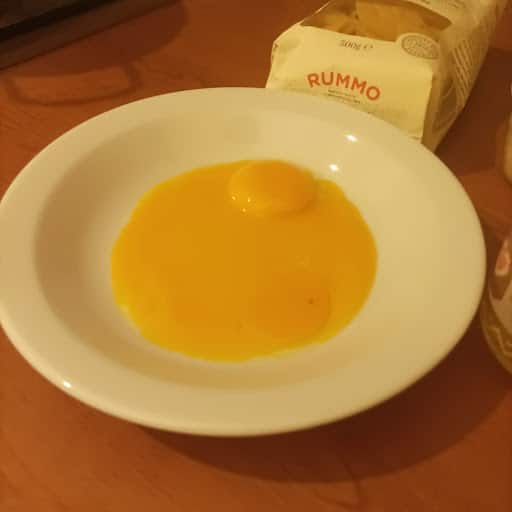
Pro tip: Many people add the egg sauce without heating, relying on pasta’s residual heat to thicken it, but this method is rather imprecise. For a perfect sauce, use a double boiler and a kitchen thermometer. This way, you’ll be able to heat the eggs over the pasta pot and to ensure that they reach the right temperature without overcooking.
Pecorino romano: Made from sheep’s milk and aged up to 12 months, this Italian hard cheese brings that distinctive tangy and salty flavor that sets carbonara apart from any other pasta dish. While some may be tempted to swap it out for Parmigiano or other hard cheeses, I stand again with the traditionalists. Pecorino Romano has a unique richness that elevates the creaminess of the sauce and complements the guanciale’s spiciness oh-so-perfectly. Use high-quality Pecorino Romano and grate it fresh for the best results. It makes all the difference in the world, so don’t be shy with that cheese grater! 😀
Freshly ground black pepper: I always recommend using freshly ground pepper, but I realize I never explained why. The reason is very simple: all the compounds that give black pepper its aromatic profile and spicy taste tend to oxidize pretty quickly. Why let them go to waste?
Also, if you care about presentation, grinding the pepper by yourself can give you more control over the dish’s final look. Imagine two different plates of carbonara, one topped with black pepper powder, and one gently dusted with a mix of finely and coarsely ground pepper beans. I am not very good at photography, but if I were to start a career as an Instagram foodblogger I would probably opt for the second.
Coarse salt: for the boiling water.
As with my pasta alla gricia recipe, this recipe doesn’t call for olive oil. The reason is that you don’t need it, as the guanciale will gradually lose its fat while cooking, greasing the saucepan just fine.
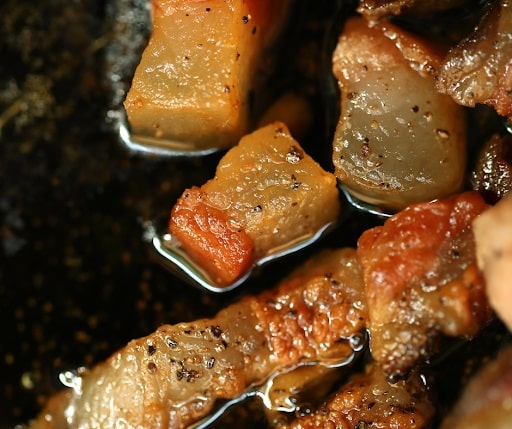
How Many Eggs Should I Use For Carbonara?
You may be familiar with the widely shared rule of thumb that suggests using one egg yolk per person, plus an extra one. However, I find this rule to be rather imprecise.
Its proponents typically assume that you would be using 80 grams of pasta per person (approx. 3 oz), which may not hold true for everyone. Personally, when I cook, I prefer to use at least 4 ounces of pasta per person, which means I require more eggs.
To avoid ending up with a dry carbonara, don’t focus solely on the number of portions. Use a ratio of 1 egg yolk for every 3 ounces of pasta, with an extra one at the end, instead. For instance, if I need to prepare carbonara for 4 people, I will use a minimum of 17 ounces of pasta. Rounding up to eighteen, this implies that I will need seven egg yolks – six plus an additional one. This amounts to nearly twice as many as I would have used, had I followed the rule above!
See how easy it is to mess up a carbonara? If I used only 4 eggs as they recommend online, I would get too little cream and my dish would be overly dry.
That’s why, for this recipe, I’m going to dwell a little more than usual on each step. Now, let’s make some penne carbonara!
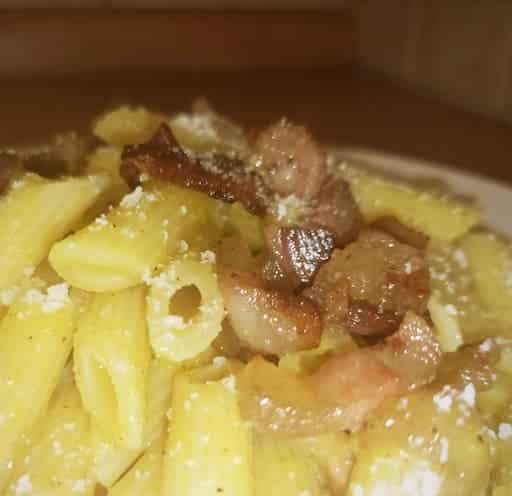
Method
Preparing the ingredients
First, let’s prepare the ingredients so that you have them on hand when you need them.
Black pepper: take a large frying pan (the same one you will use later to cook the guanciale), and grind it directly on its surface.
Guanciale: Remove all the exterior parts covered with pepper until your guanciale is completely clean, then cut it into strips and place it near the stove. You will need it soon. The pepper coating is traditionally used to season and preserve the guanciale, but it can also attract flies, so it’s better to cut it off completely before cooking.
Eggs: break them up, and separate the yolks from the whites. Set the whites aside in the refrigerator, and keep the yolks in a double boiler, or in a large bowl or dish that you can nest on the pot where you will cook the pasta.
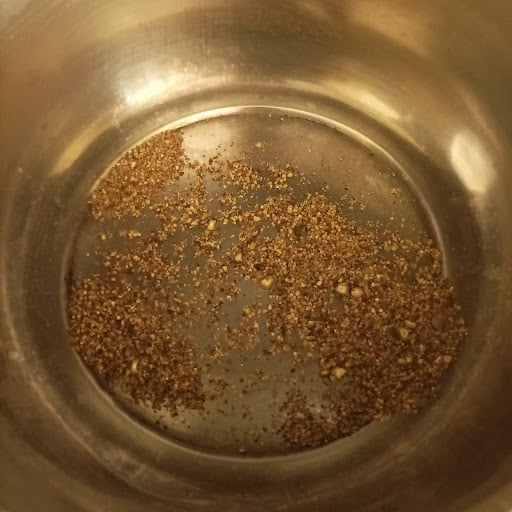
Cooking guanciale
Rinse the pan and put it back on the stove with just a trickle of water. As soon as the water starts boiling, add the guanciale. The heat of the water will close its pores, making it crispy outside and juicy inside.
Now, cook the guanciale over low heat for at least 10 minutes, stirring constantly with a spatula.
Meanwhile, fill a large pot with water, and bring it to a boil. If you’re using a double boiler to make the egg mixture, use the lower half.
To tell when the guanciale is ready, wait until the fatty edges become almost transparent, then slightly golden brown. At this point, remove it from the pan with a slotted spoon, and set it aside on a plate covered with a paper towel. Don’t throw the fat away, you will need it in a moment.
As the guanciale strips dry, they will become a little crispy, but if you don’t wait too long before removing them from the heat they will retain a slightly more tender core.
The pasta and pecorino cheese can remain in their packages for now.
Now, move the frying pan with pepper to the stove, and turn on the heat. Toast the pepper for about 30 seconds, then remove it and set it aside on a small plate.
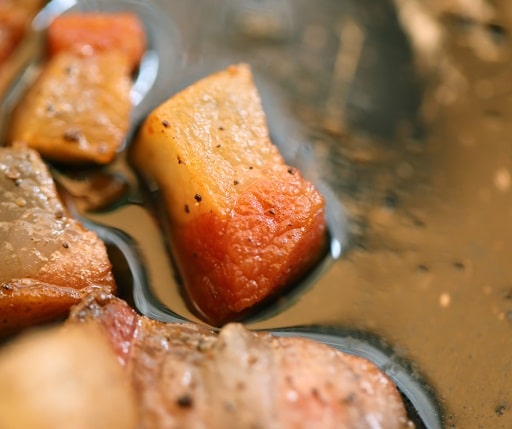
How to make the perfect carbonara sauce
At this point, the water in the pot should be boiling.
Take the bowl or pot with the egg mixture, and add the pecorino cheese along with some of the pepper you toasted earlier. Then, pour some of the fat from the guanciale over it. This trick may not be the healthiest, but it will give you a much creamier carbonara sauce.
Now, place the bowl on top of the pot with the boiling water for a few minutes. Use a kitchen thermometer to monitor the temperature of the egg and cheese mixture, and set it aside as soon as it reaches 149° F.
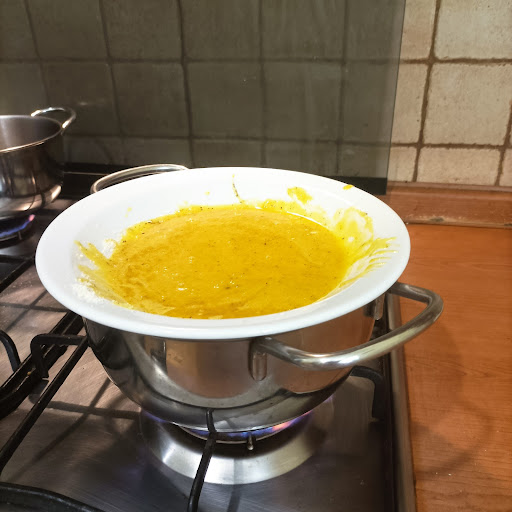
This is the temperature at which the proteins in the egg yolks begin to coagulate. As a result, your egg mixture will become thicker without cooking completely. Plus, it will be completely pasteurized, eliminating any risk associated with eating raw eggs.
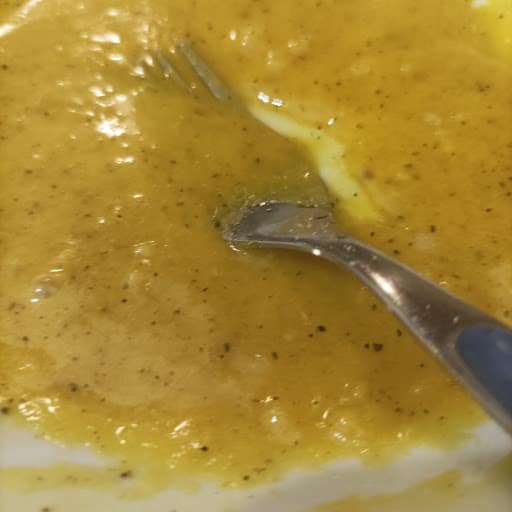
Final steps
Your penne carbonara is almost ready. You only have one thing left to prepare: the penne.
After removing the egg and cheese mixture from on top of the pan with the boiling water, add a handful of coarse salt, and cook the pasta on medium-high heat according to package instructions until it is al dente.
Now, many people usually put it back in the pan with the guanciale fat and complete the cooking there, but I don’t recommend that. While in other recipes this step can help flavor the pasta, in this case the fat will grease the pasta and prevent it from bonding well with the egg sauce.
Here’s what I suggest doing instead: scoop some cooking water into a small cup, then drain the pasta and place it in a large bowl. Next, add the egg and cheese mixture and stir quickly to prevent the residual heat from the hot pasta from cooking the sauce. Also add the reserved pasta water, and finally the guanciale.
Serve immediately, and add a sprinkle of pecorino cheese and toasted black pepper on top of every plate.
Now, you have a delicious penne carbonara ready to be enjoyed.
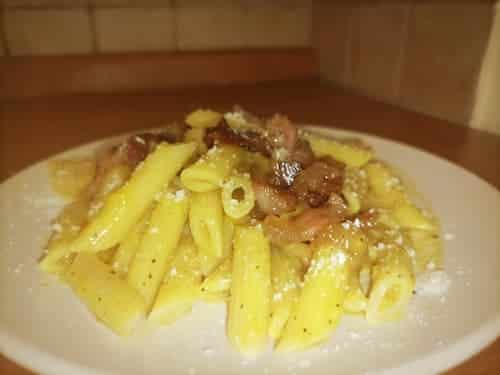
Conclusion
Crafting the perfect penne carbonara is an art that anyone can master. You just need a little care and attention.
This delicious recipe, with its creamy egg sauce, smoky guanciale, and savory pecorino cheese, offers a culinary experience that leaves you craving more after every bite. As you savor the flavors of this iconic Italian dish, you’ll understand why it has gained worldwide fame and become a favorite for casual dinners and special occasions.
But this is just the beginning! We have lots of mouthwatering pasta dishes that you can explore while also enhancing your culinary skills!. From classic Italian creations to innovative twists on favorites, each recipe is designed to elevate your cooking. Go check our pasta archives, and venture forth with us on a gastronomic journey, discovering the wonders of pasta and unraveling the secrets behind more delectable dishes.
Before you delve into the next culinary adventure, here is a handy recipe card that’ll guide you step-by-step in crafting the most delicious penne carbonara.
We value your feedback! Try our recipes and let us know what you think by leaving a five-star review. Your thoughts and experiences will help us bring more delicious recipes to your table.
Get ready to become a master in your own kitchen. Buon appetito!
Print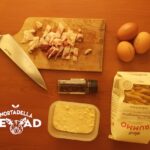
The Perfect Penne Carbonara
- Author: Mortadella Head
- Total Time: 40 minutes
- Yield: 4 1x
Ingredients
18 oz pasta
7 large eggs
5 oz guanciale strips
4 oz pecorino romano cheese, freshly grated
freshly ground black pepper to taste
coarse salt to taste
Instructions
Preparing the ingredients:
- Take a large frying pan and grind freshly ground black pepper directly on its surface. Toast for 30 seconds on low heat, then set aside on a small plate.
- Remove the pepper coating from the guanciale. Cut the rest into strips and place it near the stove for later use.
- Break the eggs and separate the yolks from the whites. Set the whites aside in the refrigerator and keep the yolks in a double boiler or a large bowl/dish that you can place on the pot where you will cook the pasta.
Cooking the guanciale:
- Rinse the pan that you used to toast the black pepper, and put it back on the stove with a trickle of water. Once the water starts boiling, add the guanciale. This will close its pores, making it crispy outside and juicy inside.
- Meanwhile, fill a large pot with water and bring it to a boil. If you’re using a double boiler to make the egg mixture later, use the lower half.
- Cook the guanciale over low heat for at least 10 minutes, stirring constantly with a spatula.
- When the guanciale’s fatty edges become almost transparent and slightly golden brown, remove it from the pan with a slotted spoon, and set it aside on a plate covered with a paper towel. Keep the fat, as you will need it in a moment.
Making the carbonara sauce:
- Add the Pecorino Romano cheese and some of the toasted black pepper to the bowl or pot with the egg yolks. Next, pour some of the guanciale fat over it. It will make the sauce creamier.
- Place the bowl on top of the pot with the boiling water for a few minutes. Use a kitchen thermometer to monitor the temperature of the egg and cheese mixture. Remove it from the heat when it reaches 149°F (65°C). This temperature allows the proteins in the egg yolks to coagulate and thicken the sauce without fully cooking the eggs.
Final steps:
- Cook the penne pasta with a handful of coarse salt according to package instructions until it is al dente.
- Scoop some cooking water into a small cup, then drain the pasta and place it in a large bowl.
- Quickly add the egg and cheese mixture to the pasta, stirring to prevent the residual heat from cooking the sauce. Add the reserved pasta water to achieve the desired consistency.
- Finally, mix in the cooked guanciale.
- Serve your pasta carbonara immediately, and top each plate with a sprinkle of Pecorino Romano cheese and toasted black pepper.
- Enjoy your mouth watering penne carbonara, prepared with love and attention to detail!
- Prep Time: 10 Minutes
- Cook Time: 30 Minutes
- Category: Pasta
- Cuisine: Italian
Keywords: penne carbonara recipe, pasta carbonara, delicious penne carbonara, spaghetti carbonara, carbonara sauce

